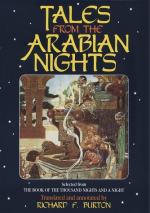The stone which the bird had pointed out to the princess was a king’s son, as noble as he was handsome. He cast affectionate looks to his life-giver and it was plain that each loved the other. It was he who had brought the greater part of the chest-shaped stones thither, the which were coffers full of gold and jewels. When the bird had told to every one that which each wanted to know, all the company of the disenchanted scattered, the three children and the wealthy prince going together. When they came home the first thing they did was to break into the lion’s den. They found their mother lying in a swoon, for she had lost her senses on hearing the house broken into. They took her away, and she soon afterwards recovered. Then they dressed her in fitting attire, and taking her to the palace asked audience of the king. This granted, Vilhjamr, Sigurdr, and their sister declared to the king that they were his children and that they had brought with them their mother from the lion’s den. The king was amazed at this story and at all that had happened. The sisters of the queen were sent for and questioned, and, having got into scrapes by differing in accounts, confessed at last their misdeed and told the truth. They were thrown before the same lion that the queen had been given to, and it tore them to pieces immediately and ate them up, hair and all.
Now the queen took her former rank, and a banquet was held in joy at this happy turn of affairs, and for many days the palace resounded with the glee of the feast. And at the end of it the foreign prince wooed the king’s daughter and gained easily her hand, and thus the banquet was begun afresh and became the young people’s marriage-feast. Such glee has never been witnessed in any other kingdom. After the feast the strange prince returned to his home with his bride and became king after his father. Vilhjamr also married and took the kingdom after his father. Sigurdr married a king’s daughter abroad, and became king after the death of his father-in-law; and all of them lived in luck and prosperity. And now is the story ended.
From bleak Iceland to sunny India is certainly a “far cry,” but we had already got half-way thither in citing the Egypto-Arabian versions, and then turned westwards and northwards. We must now, however, go all the way to Bengal for our next form of the story, which is much simpler in construction than any of the foregoing versions, and may be considered as a transition stage of the tale in its migration to Europe. This is an abridgment of the story—not of Envious Sisters but of jealous co-wives—from the Rev. Lal Bahari Day’s “Folk-Tales of Bengal,’’[FN#434] a work of no small value to students of the genealogy of popular fictions:
Bengaliversion.




